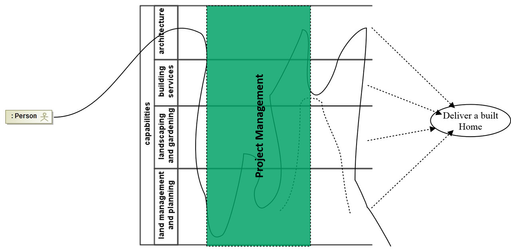Introduction
...
Alternatively one could choose to define capability using the architectural unification approach POLDAT
- Process (business processes)
- Organisation (structures)
- Location (Geographical information)
- Data (models, life cycles, security etc)
- Application (software, security, interoperability etc)
- Technology (infrastructure)
...
If within an industry sector a clear set of capabilities have been defined, it becomes easier to compare companies within that sector without getting bogged down in the implementation detail (business functions, services, software and hardware etc).
A very good example of this would be training organisations. How would you compare a number of training companies.
- size of the portfolio (single supplier to meet all your training needs)
- training schedule (courses are on a regular basis at well defined locations)
- geographical reach (ability to attend courses without having to travel 10s of miles)
- ability to deliver training in a public and non public manner
- quality of the delivery (the trainers have a reputation of being easy to work with and having a great delivery style)
- flexibility of courses (i.e. can be courses be tailored)
- programme delivery (boot camps etc)
- the brand
- flexible and attractive cost models
Having worked in the training industry for 21 years I would categorise the core capabilities for a training company as
- training delivery - the ability to deliver a learning outcome, involves courseware and possibly equipment
- portfolio management - the ability to make courseware available through authored courseware or purchased courseware
- customer relationship management - the ability to understand your customers training needs
With just these three capabilities it's possible to perform a comparison of any number of training organisations
Industry alignment
You want to compete in a particular sector but the way in which you are structured and operate doesn't allow you do a like for like comparison with your competitors. So you take an industry defined capability model, look at its goals and determine how would you align your organisation up against the industry standard to bring about those capabilities to deliver those goals.
...
Once you have gone through the exercise of defining your capabilities (which when combined in certain ways deliver certain goals), it now becomes possible to combine those capabilities in other ways to discover what other goals can be achieved, in other words what opportunities do the new combinations create.
A good example of this is eTOM from the TMF (Telemanagement Forum)
Tactical alignment to strategic goals
...
It's now clear from the discussion above that there will be a certain amount of activities woven through each of these distinct capabilities to deliver the goal outcome of "Deliver built built house"
...
Whichever approach you take, the emergence of a complex matrix of capabilities to deliver our goal outcome will begin to appear
So the reality then becomes as shown in the figure below. Here we see that the individual who wants the house built must interact with each organisation, clearly outlining their goals. A set of capabilities (comprised from the functionality within those organisations) will be assembled to deliver those goals. Note we have only shown one capability per organisation but there may be many.
...
